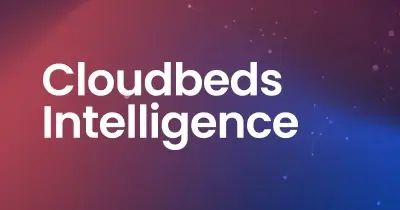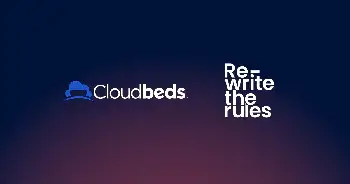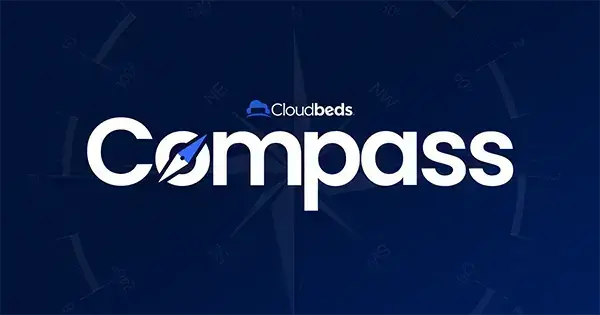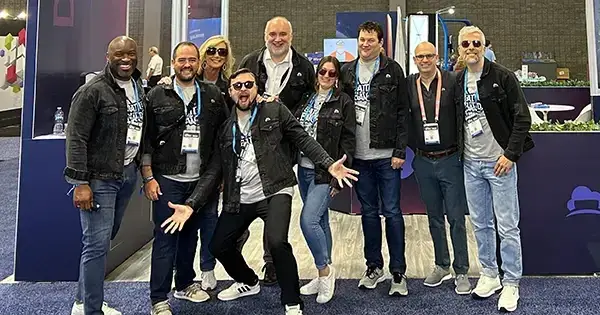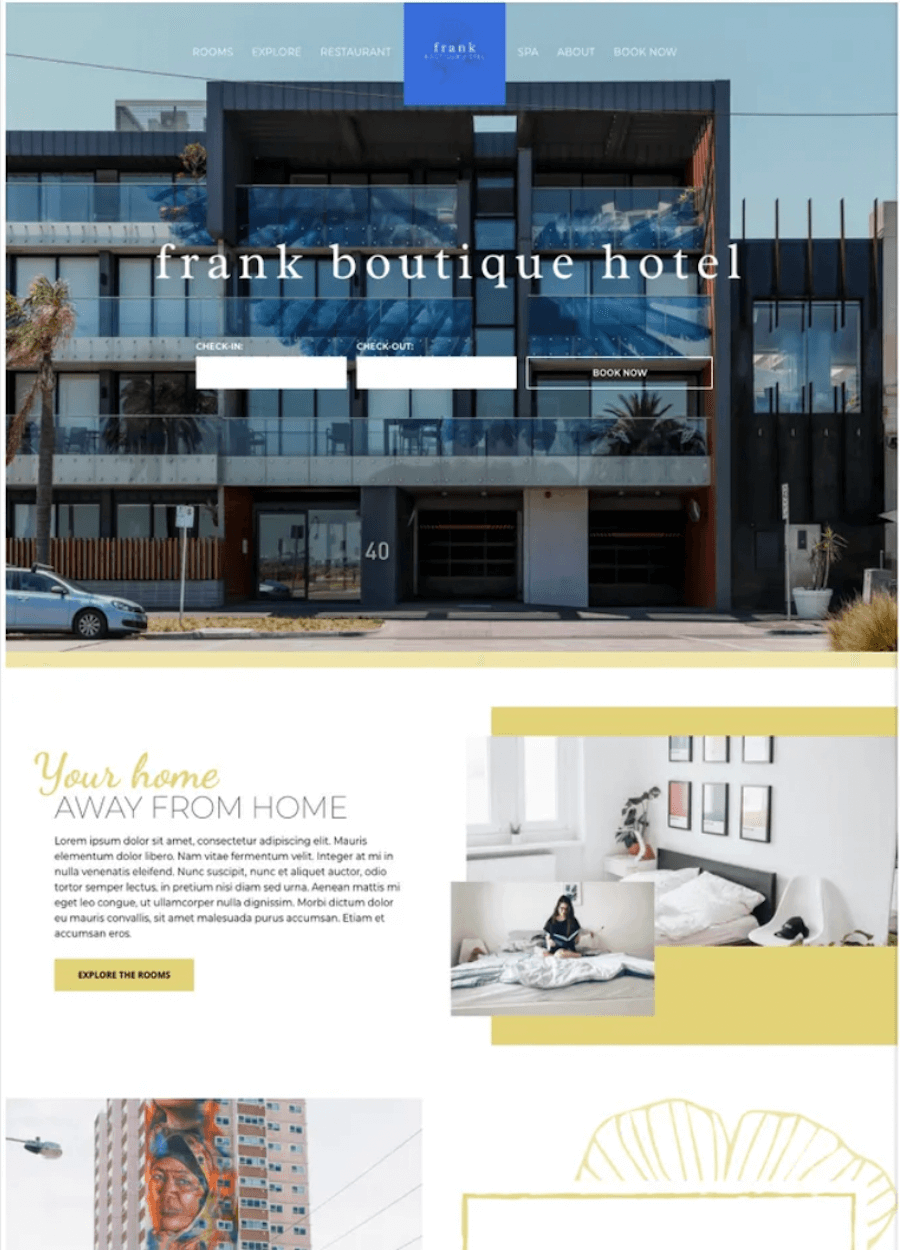
By Cloudbeds
What is a direct booking?
Direct bookings are reservations guests confirm directly with a property without using an online travel agency (OTA) or 3rd party intermediary. They’re typically made on a hotel’s website or other direct booking channels, like email, the sales team, social media, or through messaging tools like WhatsApp or Messenger.
Direct bookings are beneficial because they connect lodging businesses directly with potential customers and increase hotel revenue through money saved from OTA commissions. With direct bookings, lodging operators own their guest data and can pick and choose what information they collect during the booking process. This information can be used for more personalized pre-stay communication, post-stay follow-ups, and future marketing efforts.
Direct bookings have become essential to any independent hotel’s distribution mix. A direct booking strategy is a powerful force in reducing customer acquisition costs, increasing occupancy, and improving profitability by building greater brand loyalty and giving you direct access to guests.
Still, it’s important to note that all bookings are innately good. Often when we discuss the importance of direct bookings, it sounds as if we’re arguing that somehow third-party bookings are bad when they’re not. Different types of bookings will bring you varying amounts of revenue and profit. While OTAs take a percentage of your nightly rate, it’s still revenue you may not have obtained elsewhere.
Before jumping into concrete tactics for capturing more direct sales, let’s review trends and the most common booking channels, including metasearch engines, online travel agencies, and a property’s website. This brief review will give you the foundation to understand the place of direct sales within your distribution strategy.
Direct hotel booking trends
How has the direct booking landscape evolved over the past few years?
Katie Moro, VP of Data Partnerships at Amadeus, shared at Passport 2023 how direct bookings have increased since the pandemic, providing key distribution insights for lodging operators.
Top booking channels
Part of creating a winning distribution strategy is meeting your customers in real-time. Three of the largest booking sites for lodging businesses are online travel agencies, metasearch engines, and your direct website. Each booking source has advantages and challenges, so it’s helpful to know the differences when deciding on your channel mix. Developing a robust mix to fit your hotel business’s needs is crucial to boost direct bookings.
Online travel agencies (OTAs)
41% of travelers prefer to use online travel agents, like Expedia, Airbnb, and Booking.com. The majority of OTA bookings come with a commission fee. This means that guests create their reservations and process payments via the OTA website, and the OTAs keep a negotiated commission per booking before distributing the remaining payment amount to the property. Commission fees for some channels can be as high as 30% per booking, so it’s crucial not solely to rely on OTAs for reservations. Most properties use a channel manager to share their inventory to keep all their channels, rates, and rooms in one place.
Benefits:
- Brand power to attract travelers worldwide across target markets and demographics
- Access to niche markets via region-specific OTAs, like Ctrip, or property-specific ones, like Mr & Mrs Smith
- Visibility to travelers that may not have been aware of your property before searching (also known as the billboard effect, where consumers visit an OTA for research and eventually book direct)
- Marketing incentives or special offers and inventory allotments give you control over the share of OTA sales in your distribution mix
Challenges:
- High commission fees for the more popular OTAs and rising commissions every year
- Access to very little information about guests who book your hotel on an OTA
- Less control over the guest experience as their first point of contact is with the OTA and providers own guest data
- Need to track and maintain rate parity between OTAs and direct channels
Metasearch engines
Metasearch sites like Kayak, TripAdvisor, and Trivago allow consumers to compare prices across OTAs and a property’s website. Hotels can bid on metasearch advertising placements and pay when consumers click on the ad. Metasearch differs from OTAs in that you can direct travelers back to your website to drive direct bookings, and it works on a non-commission model; instead, you pay a cost per click (CPC). You can set a budget for how much you want to bid for each click and adjust bids to optimize your overall strategy.
Benefits:
- Metasearch engine users are usually active trip planners and therefore have more search intent
- The CPC model levels the playing field by leading travelers to reserve directly on your website, giving you ownership of the relationship
- The CPC model also makes it easy to scale demand as needed
- You only pay for performance
Challenges:
- You’re competing in an open auction, which often rewards bigger budgets
- Fluctuating CPC bids based on market demand means that hoteliers must keep a close eye on performance to avoid overspending
Hotel website
Direct bookings via a hotel’s website allow hoteliers and hosts to transact directly with bookers. The advantages of direct sales are twofold: you don’t pay commissions to third parties and can maintain a direct relationship with the customer. However, these bookings aren’t entirely free. First, you must have an online booking engine on your website to take your reservations and process payments. Second, you still have to invest in marketing efforts to attract travelers and remain competitive.
Benefits:
- A one-on-one relationship with guests that improves the user experience
- More opportunities for upsells like room upgrades and late check-outs before arrival
- No commissions paid to third-party OTAs or other marketplaces means more revenue and profits
- Loyalty bookings can lower overall costs by increasing the lifetime value of each guest.
- You own guest data which can be used for pre-arrival communication and post-stay remarketing efforts
Challenges:
- Direct bookings require strong digital marketing skills or the services of a hotel marketing expert to keep costs low compared to other channels.
13 ways to increase direct bookings
Now that we’ve discussed their value, let’s look at some key tactics to increase direct sales at your property. As you look to increase direct bookings, remember that minor improvements amplify over time, so don’t get discouraged if you don’t see results overnight. Each 1% increase in direct sales is a win worth celebrating! Eventually, you can rely less and less on OTAs and other third-party, commission-charging sources for your bookings.
Here are a few ways to increase your hotel’s direct bookings
1. Use a commission-free booking engine
Look for a commission-free booking engine that’s also mobile-friendly; mobile devices account for a significant share of travel research and booking, with as many as 70% of travelers using their smartphones to book their holidays. Mobile usability will maintain the competitiveness of your channel.
Ensure the booking process is limited to two or three steps and includes a rate checker so consumers can compare prices from your website to increase conversion rates. That way, you keep them from leaving your site to rate shop on OTAs, and you also give them a reason to book by showing that you have the best rate.
2. Build an eye-catching, user-friendly website
Your website is often the first impression potential guests have of your property. Go the extra mile and use eCommerce best practices to improve the user experience and encourage travelers to book direct. Ensure you use high-quality images and videos to showcase all your rooms and amenities and provide a modern and seamless experience to encourage travelers to book. Use bold, colorful call-to-action (CTA), like “Book Now,” on every page, and include FAQs to answer any last questions.
3. Utilize a variety of rate plans
Incorporating a variety of rate plans as a part of your revenue management strategy gives travelers more options and flexibility to choose what best suits their needs (and helps you better manage occupancy). Consider offering Earlybird, Flexible, or Non-refundable rate plans through your booking engine to encourage direct bookings.
Another way to attract various segments and increase direct bookings is through split inventory. Split inventory is when lodging operators combine various room types, sold as a single unit. This gives travelers the opportunity to customize their booking experience, which can lead to an increase in direct bookings, revenue, and guest loyalty.
4. Include upsells and add-ons during the booking process
Let guests personalize their stay as much as possible using add-ons, upsells, and packages integrated into your booking engine. Offer things like parking, transportation, spa passes, or tours during checkout so that travelers can pick and choose what best suits their needs. These extras help differentiate your website from OTAs and result in additional revenue for your property.
5. Leverage digital marketing
This is where boosting direct sales can get a bit tricky. Instead of relying on OTAs for their marketing muscle, you’ll have to run hotel marketing campaigns yourself. Begin by looking at your property management system data to identify guest segments most likely to book direct.
Once you’ve identified your guest segments, choose which channels make the most sense for your target audience.
- Metasearch engines are a great place to start, as they target users with the most intent
- Search engine marketing (SEM) and retargeting can help boost your hotel’s visibility fast
- Social media campaigns on Facebook or Instagram have great segmentation capabilities for reaching niche audiences
- Search engine optimization (SEO) efforts help to improve your website’s performance and target keywords ranking on Google and other search engines
- Email marketing helps to keep upcoming and past guests engaged and informed about your property and perks
Remember that marketing requires consistent testing and optimization to see what works best. It’s all about continuous improvement!
6. Give guests channels to communicate with you
During the discovery phase, travelers often have a lot of questions about a property’s amenities, rooms, location, and more. To help answer these questions fast, build trust, and encourage the likelihood of a direct booking — invest in guest messaging tools that can be integrated into your website.
Messaging platforms allow you to send and receive messages from various channels like chatbots and messenger for business and manage everything through a unified inbox. This way, you can manage questions across channels fast and streamline the booking process. You can also use AI or pre-programmed chat tools to eliminate the need for human intervention.
7. Create a sense of urgency
As a final nudge, use messaging on your website that creates a sense of urgency for travelers. For example, you can test out flash sales or limited-time offers to see if conversion rates increase. Try sending these types of sales out via email to drive traffic, or else use a banner at the top of your website with a unique discount code. These types of promotions are great for when you need to fill occupancy fast and should not be used all the time.
8. Don’t just sell a room, sell an experience
Travelers today are looking for more than just a place to stay, they want to find an accommodation provider that fits the experience they’re looking for. Our lodging report identified a shift from amenities to experiences as a major trend and advised lodging operators to break away from the amenitity mentality and focus on efforts to enhance the guest experience and satisfy travelers’ social, environmental, and economic needs.
You must clearly define how your rooms, amenities, and values line up to deliver a unique experience and communicate this across channels to drive more direct bookings. For example, if you have a small lodge nestled in the mountains, showcase how you offer a shuttle to the ski hill, an après-ski happy hour, and a rooftop hot tub to end the day in. The more you lean into your unique experience the higher likelihood you’ll find a loyal customer base who return time and time again.
9. Lean into loyalty
Your past guests are a gold mine when it comes to rebooking. Re-engage past customers using an email marketing campaign with compelling discounts and offers. Also, if you don’t have one, consider launching a loyalty program. Travelers respond well to these programs, and you’ll learn much more about your ideal guest profiles. Your loyalty programs don’t have to be complicated, with points and redemptions — it can be as simple as promising “Members Only” rates.
10. Get active on social media
Social media is a fantastic way to strengthen and promote your brand and build relationships with past and potential guests. Choose what channels to invest time and effort into based on your guest demographics, and run social media ads to drive more direct bookings. Ensure that you create CTAs on your social profiles that link to your booking engine to streamline the customer experience.
Encourage social content sharing around your property by creating hashtags and building “Instagrammable” spots to encourage guests to post and share photos. You can then reshare content posted by guests. Nurture and engage with your community online and make occasional offers or exclusive packages for your followers.
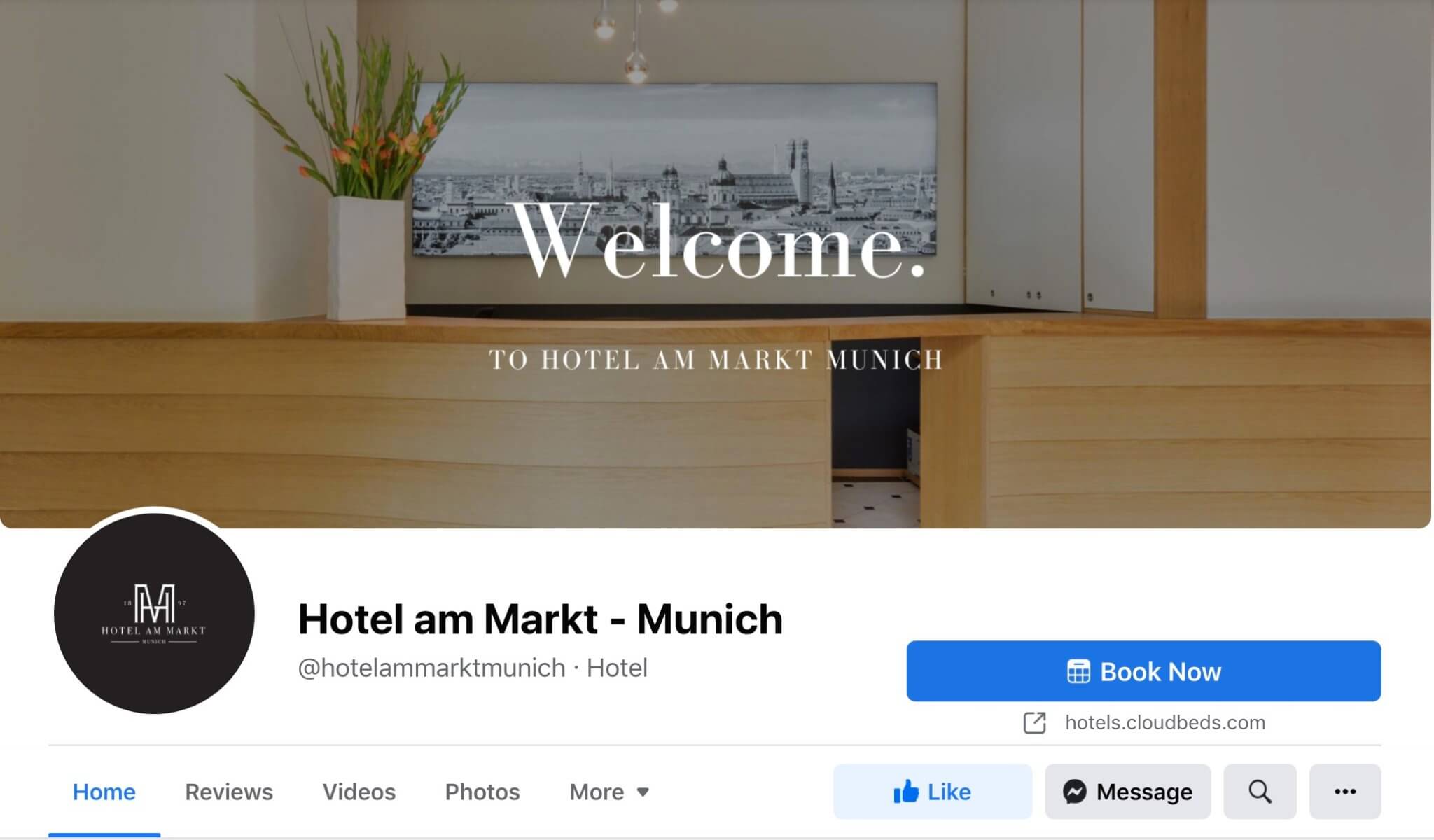
11. Participate in events and tradeshows
Connections are everything in the hospitality industry and can be vital in securing steady direct bookings via local tourism bureaus and other hospitality professionals. Consider attending tradeshows to network and educate attendees about your brand and offerings. At these events, you’ll also learn valuable insights into industry trends which can help spark new ideas for your property. By taking the time to learn from others, you can make your hotel more appealing to guests and, in turn, increase direct bookings.
12. Personalize, personalize, personalize
Guest profiles within your PMS can contain detailed information, such as birthdays, anniversaries, and special requests. You can use this information with guest messaging software to build guest relationships and offer personalized services, special discounts, and deals during their stay.
For instance, say one of your guests recently visited your property for an anniversary trip and noted that they have a gluten allergy. Imagine the guest’s reaction if you were to send a text that your restaurant has recently expanded its gluten-free options and is offering their room at a discounted rate for their next stay. Personalized service creates lasting customer loyalty and encourages repeat visits.
13. Implement a reputation management process
From OTAs to online directories and community forums like Yelp, travelers have various platforms to rate and review your property. Your future guests will likely visit some of these sites when researching your property.
Establish a process to collect and manage reviews. Send a quick message post-check-in to ensure guest expectations are meeting reality and conduct any necessary service recovery at this point. At the end of a guest’s stay, send an automated survey to collect feedback and end the process with a link to your review sites.
Ensure that you inspect your listings on OTAs and directories and respond to reviews when you can. A personal, well-tempered comment from the owner or manager looks good to guests and improves your brand’s perception. Those same guests are more likely to visit your website and book there.
Expand your distribution mix & earn more revenue
Reducing dependency on OTAs and increasing direct booking revenue can contribute to a better bottom line for your property. Still, keep in mind that the best reservation is the one with the most value (total RevPAR), acquired through the lowest cost (customer acquisition cost or CAC).
Sometimes the commission costs paid to OTAs are less than those incurred on an individual marketing campaign. Remember to track these costs as you test different ways to drive direct bookings. Increasing direct bookings requires cleverness and creativity, but is well worth it to own your guest data and earn more revenue!
